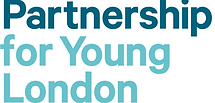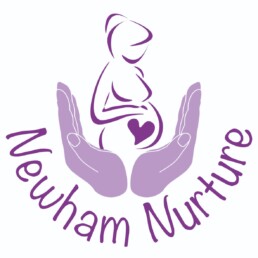4in10 Newsletter 23.3.23
Read the latest ewsletter here.
To get this directly to your inbox every fortnight please do join us.
4in10 Newsletter 23.2.23
Read the latest ewsletter here.
To get this directly to your inbox every fortnight please do join us.
4in10 Newsletter 8.3.23
Read the latest newsletter here.
To get this directly to your inbox every fortnight please do join us.
London mothers tell the United Nations temporary accommodation violates children’s rights.
4in10 and Little Village have collaborated to write a submission for the examination of the United Kingdom’s 7th periodic report to the United Nation Committee on Economic and Social and Cultural Rights (CESCR). The CESCR committee is currently reviewing the UK Government’s compliance with the International Covenant on Economic, Social and Cultural Rights.
Little Village is a charity that fosters a village of support and solidarity for families on low incomes with children under five in London. Little Village equips families with pre-loved children’s clothes and baby essentials as well as linking them with key services. They also work alongside parents to fix the system that keeps them trapped in poverty.
The research for this report was informed by a human rights-based approach, 4in10 worked in partnership with a small group of mothers who are part of the Little Village community. In this process, the contribution made by the mothers seeks to bring to the attention of the CESCR their experiences of struggling to access safe and affordable housing, a lack of access to basic necessities and difficulties accessing childcare and therefore being able to work. Therefore, this report contains evidence that the rights under Article 11 ICESCR – the right to an adequate standard of living, and Article 6 ICESCR – the right to work are not enjoyed equally in London. The UK government has failed to protect the rights of families with young children under 5 years of age living in London. It’s time to hold the UK Government to account and more than that, it’s time for change.
A few excerpts from the report are illustrated below. To read the report in full click here.
Key findings
Experiences of inappropriate and unsafe housing
The mothers shared their experience of a lack of access to safe, secure housing for themselves and their children as one of the most acute issues they face and an issue that they wished the report to draw the Committee’s attention to. Several of the women were or had previously been placed by their local authority in temporary accommodation. London has an acute homelessness problem, with 10 times more London households in temporary accommodation than in the rest of England[1]. In 2021 nearly 56,500 households were living in temporary accommodation, including 75, 580 children. Furthermore, research on the crisis of family homelessness in the UK shows that temporary accommodation is harmful to families. For example, research commissioned by The Cardinal Hume Centre and Home-Start Westminster, Kensington & Chelsea and Hammersmith and Fulham and published last week into the experience of families living in temporary accommodation in Westminster found that temporary accommodation is more than just a housing problem, the impact spans many areas including health, education, child development and a family’s financial situation.[2]
Similarly, the mothers had found the housing their families where places in to be inadequate for their needs and damaging to their mental and physical health as well as that of their children. One mother shared:
“When I had a studio flat with my son, it was so damp. Every time I called they just say you have to wash it [the walls]…but it would keep coming back. My son has an inhaler because of living in mould.”
Inadequate housing can have a detrimental impact on a child’s mental health. A mother shared that their children were showing signs of depression due to overcrowding:
‘Children are depressed because of sharing bedrooms. So, they may act out at school because their needs are not being met at home.’
While temporary accommodation is intended to house homeless families only for short periods of time, this was not the case for the women and other families across the UK. A combination of cuts to local government funding, an inadequate welfare system and a lack of permanent social or affordable housing has driven this increase. Consequently, children in London are growing up in substandard and unsafe temporary accommodation and the effect this is having on children’s rights cannot be understated. If the government is committed to its pledge to the international covenant, then giving families a safe, secure and decent home to live in must be the foundation of this.
Lack of access to childcare as a barrier to work
Another issue that the women highlighted as a priority for the Committee to examine was the barriers that prevent them from exercising their right to work.
When families are housed, especially in temporary accommodation, this is often far away from existing connections including employers and wider families and other sources of support. One mother told us how she was moved from south to north London, which meant, she would have to travel up to 2 hours each way to drop off her child with a family member who could provide childcare while she worked. The high costs of travel and subsequent lost work-time mean that this is not financially viable. Unable to make work pay this mother must rely on a small maternity payment: “I receive £626 a month and that is it. I have to buy nappies, electric every week… the money goes like that.”
Additionally, the women expressed their desire to work to increase their incomes to support their children, but this was impossible given the lack of affordable and accessible childcare available to them. Another woman, reflecting on the very high costs of childcare, asked “How can I work with 3 kids?’ Childcare in the UK is amongst the most expensive in the world according to the Organisation for Economic Co-operation and Development. In London, the cost of childcare is 30% higher than elsewhere is the country. [3] The consequence of the failure of the government to uprate the childcare element of Universal credit and the universal credit system not being set up to pay childcare fees in advance means parents are unable to make work pay and are being blocked from the workforce. Hence, polling commissioned by 4in10 in 2021 among a representative sample of Londoners found that childcare costs were felt to be the biggest driver of poverty in the city[4]. While childcare is the infrastructure that allows parents, particularly mothers, to enter or re-enter the workforce, we also know that early years is crucial to for enhancing life chances for children living in poverty.
These experiences shared by the group of mothers are shocking to read and sadly have been a reality of many low income families living in Londoners for too long. The report concludes that despite the UK Government’s assertion in its 7th periodic report to the Committee on Economic, social and Cultural Rights that it is “committed to a sustainable, long-term approach to tackling poverty”, the evidence in the report shows the UK Government is in fact failing to protect young children and their families in London from the damaging effects of poverty and is breaching their rights under ICESCR, specifically Article 11 (1) The right to an adequate standard of living and Article 6 the right to work. We urge the United Nations to listen to the voices of the women who share their experiences and call on the UK government to uphold their commitment to protect and implement these rights.
[1] Centre for London (Sept 2022) Temporary Accommodation: London’s hidden homelessness crisis
[2] The Cardinal Hume Centre and Home-Start Westminster, Chelsea and Hammersmith and Fulham (Feb 2023) The Experiences of Families Living in Temporary accommodation in Westminster.
[3] Child Poverty Action Group (June 2021) ‘THE COST OF A CHILD IN LONDON: HELP WITH CHILDCARE FEES ‘WOEFULLY INADEQUATE’
[4] 4in10 London’s Child Poverty Network (October 2021) Flying Against Gravity: the lived reality of poverty in London
Children with special educational needs and disabled children

4in10 organised a coffee morning in February 2023 that was jointly hosted by staff and parents at Marjory Kinnon School in Hounslow. Rochelle McIntyre, the Family Support and Community Outreach Worker facilitated the discussion and had invited her colleague Jo Stacey, Assistant Head Teacher, Key Stage 2 and Staff Governor as well as a parent to provide first-hand experience.
This mother shared her experiences as a single-parent and the challenges of caring for a child with autism. Throughout the group discussion, a few key costs were mentioned that demonstrate the challenge of parenting and educating children with a learning disability. These include:
- Changing dietary needs and specific food items being essential to meet the sensory needs of the child, these foods are often more expensive or difficult to predict and buy reduced
- Clothing and textures becoming uncomfortable leading to new purchases frequently
- High costs to attend a sensory appropriate gym, averaging £17.50 per visit which swallows up a high proportion of the Disability Living Allowance (DLA) that her son is entitled to
- Taxis across London for appointments as the underground is too overstimulating
- This parent shared that her son often strips off his clothes at home meaning its particularly important to keep the house warm enough, thus adding to the cost of utilities.
The emotional side for parents was also highlighted. A parent in attendance explained that working part time and taking coursework all had to stop because it just became too overwhelming for her and exhausting to keep up. Even when she was able to access a personal assistant, there were still costs associated with the PA taking care of her son or taking him out and about that limited how much her son could do with her PA. Thus, it felt like there were always limitations and challenges as to how much help she could get because the costs keep adding up.
Another parent of a child with autism shared her own experiences and emphasised that practical help is important, but the challenge of supporting and adjusting to the sensory needs of a growing child with autism is always there.
At 4in10, we want to listen to these experiences and share them with those who make decisions that impact children and their parents. We want to highlight the financial and emotional challenges that parents face and the impossible situations that parents with low-incomes encounter when caring for a child with a special need or disability. If you have other thoughts or experiences that you’d like to share, please do get in touch so we can support growing more awareness and social action to advocate for better support of children with varying needs and financial situations.
4in10 Newsletter 9.2.23
Read the latest newsletter here.
To get this directly to your inbox every fortnight please do join us.
4in10 Newsletter 26.1.23
Read the latest newsletter here.
To get this directly to your inbox every fortnight please do join us.
Research about young people designed by young people for young people

Reflections from Research and Learning Officer, Emily Barker, on an exciting new venture organised by one of our members and taking place across London.
Young Londoners Research Project
For those interested in youth-led research, I’ve got something to share! I came across a brilliant series of projects that our member, Partnership for Young London, is coordinating along with Rocket Science and Young Harrow Foundation. A total of nine research projects are taking place thanks to these partners working with the Greater London Authority who has commissioned ‘a new programme that will fund and support young people, their youth or support workers and their youth organisations to research young people’s views.’
Follow this link to learn more about the Young Researchers Programme and for a description of the nine exciting projects underway. The variety of projects speaks to the scope of creativity and talent of these young people. It’s a thrill to hear how passionate as well as thorough and insightful these young people are about putting in the work to develop new knowledge that will help improve the experiences of young Londoners.
When young people are involved in evaluating and improving the services aimed at them, it can help increase the reach and impact of these services on those who need it most. Many of the projects consider what barriers exist for young people who need to access additional support. Making steps to improve young people’s lives is a key strategy in mitigating the impact , both immediate and long term, of child poverty.
I am especially looking forward to hearing about the findings of the research projects in spring 2023! I can’t wait to learn from their analysis!
4in10 Newsletter 12.1.23
Read the latest newsletter here.
To get this directly to your inbox every fortnight please do join us.
4in10 Newsletter 15.12.22
Read the latest newsletter here.
To get this directly to your inbox every fortnight please do join us.
Newham Nurture roundtable
4in10 Manager Katherine reflects on the Newham Nurture roundtable event she attended this week
Earlier this week I had the great pleasure of attending an event that showcased and celebrated the work of the Newham Nurture project. Newham Nurture is a community partnership with NCT, Alternatives Trust, The Magpie Project and Compost London. The programme supports women through pregnancy and up to two years after birth from low income, migrant and marginalised backgrounds experiencing financial hardship and disadvantage. It does this by providing drop-in pregnancy sessions, Baby & Me sessions for mums with babies from newborn up to 2 years, peer support and counselling.
A few reflections…
The project shone out as an example of what good partnership working and co-production ought to be, but all too often isn’t. The women from the project steering group, many of whom also deliver its work as volunteers and staff members, spoke eloquently and movingly about their own experiences of struggling to access the support they needed as pregnant and new mothers, about how the partner organisations were a lifeline for them and how passionate they are about making sure that help is now available to other women who so desperately need it. It was also clear from the discussion that there was a high level of mutual respect between the project partners and local statutory services, with a clear acknowledgement that unless services really listen to and act on what women are telling them then they will remain inaccessible to many.
There is a lot for others to learn from the experience of the project. While Newham’s challenges may be distinctive, there is no doubt that in many other areas of London there are families who would benefit enormously from the support of a project like Newham Nurture. The experience of having a baby can be a daunting and isolating experience for any woman, and if you add to that experience of loss and trauma, very low income, insecure housing, language barriers and discrimination, then this is magnified many times. The event concluded with a powerful audio recording of women who come to Newham Nurture talking about it and what it meant to them. The message that came over loud and clear was that they valued the project not only for the accessible, practical advice and support it gave them but also a place where they and their children could come, feel welcomed and enjoy the friendship of others who have trod similar paths ahead of them. Compost London are evaluating the work and I look forward to reading and sharing their findings with all the other organisations in the 4in10 network so that they can learn from the excellent work that Newham Nurture has planted, grown and is now blossoming in their community.
While the overwhelming feeling I had on leaving the event was one of hope; gained from witnessing the deep commitment that the women who lead this programme have to supporting one and another and working tirelessly to improve the lives of their young children, it was also tinged with anger. Anger that the choices of our politicians are wreaking such damage on these families’ lives and withholding the resources needed to ensure their children’s rights to food, health and education. With no end to the cost-of-living crisis in sight and further cuts to services on the cards, it is alarming to think that the situation for these families will get worse. Drawing on the hope and belief that change is possible, as the project so clearly demonstrates, we must redouble our effort to challenge these systemic injustices and demand better for children and families.


